In a landmark move for the stablecoin ecosystem, Circle Internet Group, the issuer of USD Coin (USDC), has announced two transformative developments that underscore its ambition to bridge traditional finance and blockchain technology. On June 11, 2025, Circle launched native USDC on World Chain, the biometric identity-focused blockchain formerly known as Worldcoin, led by OpenAI CEO Sam Altman. Simultaneously, Circle forged a strategic partnership with Brazilian fintech Matera to integrate USDC into Brazil’s banking system, enabling multicurrency payments and seamless global transactions. These announcements, reported by Cointelegraph, sent Circle’s stock (CRCL) soaring by 10.7% on June 11, 2025, reflecting market enthusiasm for USDC’s expanding reach. This exhaustive blog post explores the significance of these developments, their technical and economic implications, and what they mean for the future of digital finance.
The Big Picture: Circle’s Vision for a Digital Dollar
Circle, founded in 2013, is a global fintech leader and the issuer of USDC, the world’s second-largest stablecoin with a $60 billion circulating supply and over $25 trillion in on-chain transactions since its launch in 2018. Pegged 1:1 to the U.S. dollar and fully backed by cash and short-dated U.S. Treasuries, USDC is designed for near-instant, low-cost global payments with 24/7 liquidity. As of June 2025, USDC is natively supported on 21 blockchain networks, including Ethereum, Solana, Arbitrum, and now World Chain, making it a cornerstone of the multichain financial ecosystem.
Circle’s mission is to create a secure, always-on digital economy by connecting traditional finance with blockchain infrastructure. Its recent IPO on the New York Stock Exchange, priced at $31 per share and surging to $83.23 on debut, highlights its growing influence. The twin announcements of USDC’s World Chain integration and the Matera partnership are pivotal steps toward realizing this vision, expanding USDC’s utility for both blockchain-native users and mainstream financial institutions.
USDC Goes Native on World Chain: A New Frontier for Stablecoins
What is World Chain?
World Chain, rebranded from Worldcoin, is a Layer-1 blockchain focused on human-centric identity and finance. Led by Sam Altman, it aims to create the world’s largest identity and financial network by leveraging biometric verification (iris scans) to prove user humanity. With over 27 million users across 160 countries, World Chain has a uniquely global reach. Its ecosystem supports Mini Apps for payments, e-commerce, and remittances, making it a fertile ground for stablecoin adoption.
Until June 2025, World Chain users held bridged USDC, a version ported from other blockchains, with approximately 2 million users actively using it. Bridged tokens, while functional, carry risks like liquidity fragmentation and reliance on third-party bridges. Circle’s launch of native USDC on World Chain eliminates these issues, offering a fully Circle-issued, regulated digital dollar directly on the network.
Technical Details of the Integration
The integration of native USDC on World Chain is powered by Circle’s Cross-Chain Transfer Protocol V2 (CCTP V2), a permissionless utility that enables secure, near-instant USDC transfers across supported blockchains. Key features include:
- Native Issuance: Native USDC is issued directly by Circle on World Chain, replacing bridged versions while retaining the same smart contract address for seamless developer and user transitions.
- CCTP V2 Enhancements: The protocol supports Hooks, automated functions that trigger actions upon fund arrival, enhancing programmability for DeFi applications. Transfers are faster and cheaper than traditional bridging, improving capital efficiency.
- Full Reserve Backing: Like all USDC, the World Chain version is 100% backed by highly liquid cash and cash-equivalent assets, ensuring 1:1 redeemability for U.S. dollars.
As
@circle posted on X, “Native
@USDC is now live on
@world_chain_! With native USDC, World Chain developers and users gain trust, stability, and global access from the world’s largest regulated stablecoin.”
Why It Matters
The World Chain integration is a significant milestone for several reasons:
- Massive User Base: World Chain’s 27 million users, many of whom are already familiar with USDC for remittances and Mini App payments, provide a ready-made audience for native USDC adoption.
- DeFi and Developer Opportunities: Native USDC unlocks DeFi composability, allowing developers to build payment, lending, and trading applications directly on World Chain. CCTP V2’s Hooks enable innovative use cases, like automated cross-chain settlements.
- Regulatory Trust: As a regulated stablecoin, USDC aligns with World Chain’s identity-driven model, which emphasizes trust and compliance. This could attract institutional players wary of less-regulated blockchains.
- Global Reach: World Chain’s presence in 160 countries positions USDC to serve unbanked and underbanked populations, particularly for remittances and cross-border payments.
The upgrade from bridged to native USDC, as
@Bitcoin_Weirdo noted on X, “reduces risks associated with synthetic bridging and provides access to Circle’s full on- and off-ramp infrastructure.” This move cements World Chain as a key player in the stablecoin economy and boosts Circle’s multichain strategy.
Circle Partners with Matera: Revolutionizing Brazilian Banking
Matera: A Fintech Powerhouse
Matera, a Brazilian fintech founded in 1987, is a leader in providing core banking and payment solutions to over 280 clients, including banks like C6 and fintechs like XP, PagBank, and Claro. Its real-time ledger, Digital Twin, powers instant transaction processing and integrates with Brazil’s Pix, the Central Bank’s real-time payment system with 168 million users as of August 2024. Matera’s technology serves two-thirds of global banks and one-third of Brazil’s banking sector, making it an ideal partner for Circle’s ambitions in Latin America.
The Partnership: USDC Meets Pix
Announced on June 11, 2025, at Febraban Tech, Brazil’s premier fintech conference, the Circle-Matera partnership integrates USDC into Brazilian banking systems, enabling multicurrency accounts that hold Brazilian reais (BRL), U.S. dollars (USD), and USDC in a single environment. Key aspects include:
- Digital Twin Integration: Matera’s Digital Twin ledger allows banks to hold USDC directly without building complex blockchain infrastructure. This eliminates delays and costs associated with correspondent banking.
- Pix Connectivity: USDC transactions are linked to Pix, enabling instant conversions between BRL and USDC for payments and transfers. This makes USDC as accessible as local fiat for everyday use.
- Global Accounts for All: Banks and fintechs can offer global accounts with USDC, allowing users to hold digital dollars without overseas operations. This reduces costs and eliminates Brazil’s IOF tax on international transactions.
- Mass Adoption Focus: Matera CEO Carlos Netto emphasized simplicity, stating, “This is a solution for the masses, for people who aren’t familiar with crypto but want a dollar account.”
As
@DTPaymentNews posted on X, “Circle Allies With Matera to Push Stablecoins Into Routine Usage,” highlighting the partnership’s focus on mainstream adoption.
Economic and Social Impact in Brazil
Brazil, South America’s largest economy, is a fintech-forward market with a vibrant crypto scene. The partnership addresses several pain points:
- Remittances and Cross-Border Payments: Brazil received $36.1 billion in remittances in 2022, often burdened by high fees (5.7% on average for $200 transfers). USDC’s integration with Pix offers a faster, cheaper alternative, potentially saving billions annually.
- Financial Inclusion: With 44% of adults unbanked in 2021, USDC’s accessibility via familiar banking platforms could bring digital dollars to underserved populations.
- Business Efficiency: Brazilian banks and fintechs gain a competitive edge by offering instant international payments with lower operational costs, bypassing traditional intermediaries.
- Regulatory Alignment: Brazil’s Central Bank, led by Roberto Campos Neto, has signaled openness to stablecoin regulation by 2026, creating a favorable environment for Circle and Matera’s initiative.
Matera’s Netto captured the transformative potential, stating, “Interoperability between stablecoins and local currency accounts is no longer a side project—it’s now at the heart of the financial system.”
Market Reaction and Financial Implications
The dual announcements sent Circle’s stock (CRCL) up 10.7% on June 11, 2025, closing at $117 before a slight 0.2% dip in after-hours trading. This surge reflects investor confidence in Circle’s ability to capture new markets. Key financial takeaways include:
- World Chain’s Scale: With 27 million users and $60 billion in USDC circulation, the World Chain integration could drive significant transaction volume, boosting Circle’s revenue from on-chain activity.
- Brazil’s Fintech Boom: Brazil’s fintech market is projected to grow at a 20% CAGR through 2030. By partnering with Matera, Circle taps into a network of 280 clients, amplifying USDC’s adoption.
- Stablecoin Dominance: USDC’s $60 billion market cap trails Tether’s $118 billion, but its focus on regulated, multichain infrastructure positions it to close the gap. Visa’s 2024 data showed USDC surpassing Tether in transaction volume ($456 billion vs. $89 billion weekly), a trend likely to accelerate with these partnerships.
- IPO Momentum: Circle’s NYSE debut in June 2025, with a valuation exceeding $20 billion, underscores its appeal to institutional investors. The Matera and World Chain deals reinforce its growth narrative.
As
@market_machina noted on X, “Circle teams up with Brazil’s Matera & brings USDC to World Chain—set to boost multicurrency payments for banks.”
Risks and Challenges
While the developments are promising, they come with risks:
- Regulatory Uncertainty: Although Brazil is open to stablecoin regulation, global frameworks vary. Circle’s compliance with MiCA in Europe and U.S. licenses mitigates this, but unforeseen crackdowns could disrupt growth.
- Competition: Tether (USDT) dominates stablecoin market cap, and emerging players like PayPal’s PYUSD are gaining traction. Circle must maintain its regulatory edge to compete.
- World Chain’s Biometric Concerns: World Chain’s iris-scanning model has faced privacy backlash, which could limit user adoption and impact USDC’s traction on the network.
- Market Volatility: Crypto markets remain volatile, with Bitcoin and Ethereum dipping despite softer U.S. inflation data on June 11, 2025. A broader downturn could dampen USDC demand.
- Technical Risks: While CCTP V2 is robust, smart contract vulnerabilities or bridge exploits could undermine trust in USDC’s cross-chain functionality.
As
@duckunfiltered cautioned on X, “USDC is making waves, but keep an eye on market complexity.”
How to Engage with These Developments
For users, developers, and businesses, here’s how to leverage Circle’s latest moves:
- World Chain Users:
- Check your World App wallet for the automatic upgrade from bridged to native USDC. Use USDC for remittances, Mini App payments, or cross-chain transfers via CCTP V2.
- Explore World Chain’s Mini Apps to discover new USDC use cases, like e-commerce or DeFi.
- Developers:
- Integrate USDC into World Chain applications using Circle’s Developer Console and CCTP V2 APIs. Build cross-chain payment or lending platforms with Hooks for automation.
- Access Circle’s Web3 Services for programmable wallets and cross-chain liquidity.
- Brazilian Businesses and Consumers:
- Contact your bank or fintech (e.g., C6, XP) to explore USDC-enabled global accounts. Use USDC for international payments or remittances via Pix.
- Businesses can reduce costs by adopting Matera’s Digital Twin for USDC transactions, bypassing correspondent banks.
- Investors:
- Monitor Circle’s stock (CRCL) for opportunities, given its 10.7% gain and strong fundamentals.
- Track USDC’s on-chain volume on World Chain and Brazil’s adoption metrics for insights into Circle’s growth.
- Stay Informed:
- Follow @circle and @world_chain_ on X for updates. Check Cointelegraph and Circle’s blog (www.circle.com) (www.circle.com) for detailed announcements.
- Use CoinMarketCap or DefiLlama to track USDC’s market cap and transaction volume.
The Future: Stablecoins at the Heart of Finance
Circle’s launch of native USDC on World Chain and its partnership with Matera are more than incremental steps—they’re a bold reimagining of global finance. By integrating USDC with a 27 million-user blockchain and Brazil’s 168 million-user Pix system, Circle is bringing digital dollars to both crypto-native and traditional audiences. The implications are profound:
- Global Financial Inclusion: USDC’s accessibility could empower millions in Brazil and beyond, particularly for remittances and cross-border trade.
- DeFi Innovation: World Chain’s developers now have a regulated stablecoin to fuel new applications, from lending to tokenized assets.
- Banking Modernization: Matera’s Digital Twin and Pix integration make USDC a practical tool for banks, bridging fiat and crypto seamlessly.
- Stablecoin Leadership: Circle’s focus on compliance and multichain infrastructure positions USDC to challenge Tether’s dominance.
As Circle CEO Jeremy Allaire stated, “There are many powerful opportunities on the horizon when Brazil’s fintech-forward ecosystem converges with the world’s most accessible dollar platform.” With regulatory clarity emerging globally and blockchain scalability improving, USDC is poised to become a cornerstone of the internet financial system.
Final Thoughts
Circle’s dual announcements mark a pivotal moment for USDC and the broader stablecoin economy. The World Chain integration taps into a massive, identity-driven user base, while the Matera partnership positions USDC at the heart of Brazil’s fintech revolution. Together, they showcase Circle’s ability to bridge the gap between blockchain innovation and real-world finance.
Will USDC become the default digital dollar for global payments? Can World Chain and Matera drive mainstream stablecoin adoption? The answers will unfold in the coming months, but one thing is clear: Circle is playing a long game, and it’s winning. Share your thoughts on these developments below, and let’s dive into the future of digital finance together!
Sources:
- Cointelegraph articles on Circle’s USDC launch on World Chain and Matera partnership
- Circle’s official announcements and blog posts
- X posts from @circle, @Bitcoin_Weirdo, and others
- Market data from DefiLlama, CoinMarketCap, and Yahoo Finance
- Matera’s partnership details from Cointelegraph Brazil
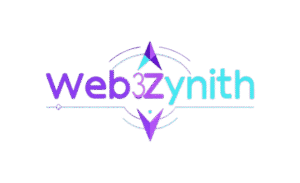
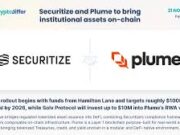

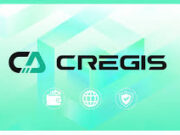

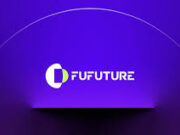







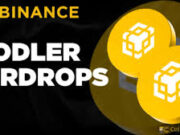
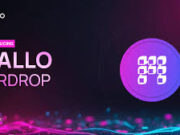
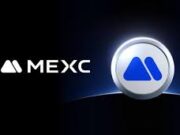

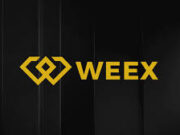
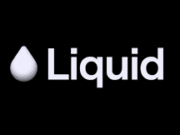


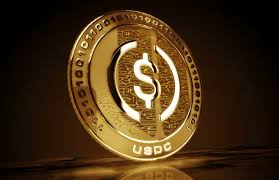
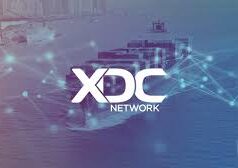





Circle’s push to make USDC native on World Chain for 27M users—that’s huge for DeFi! But the $4.6B scam losses in 2024 make me nervous about new chains.
The part about upgrading 2M users’ bridged tokens to native USDC makes sense for trust and efficiency.